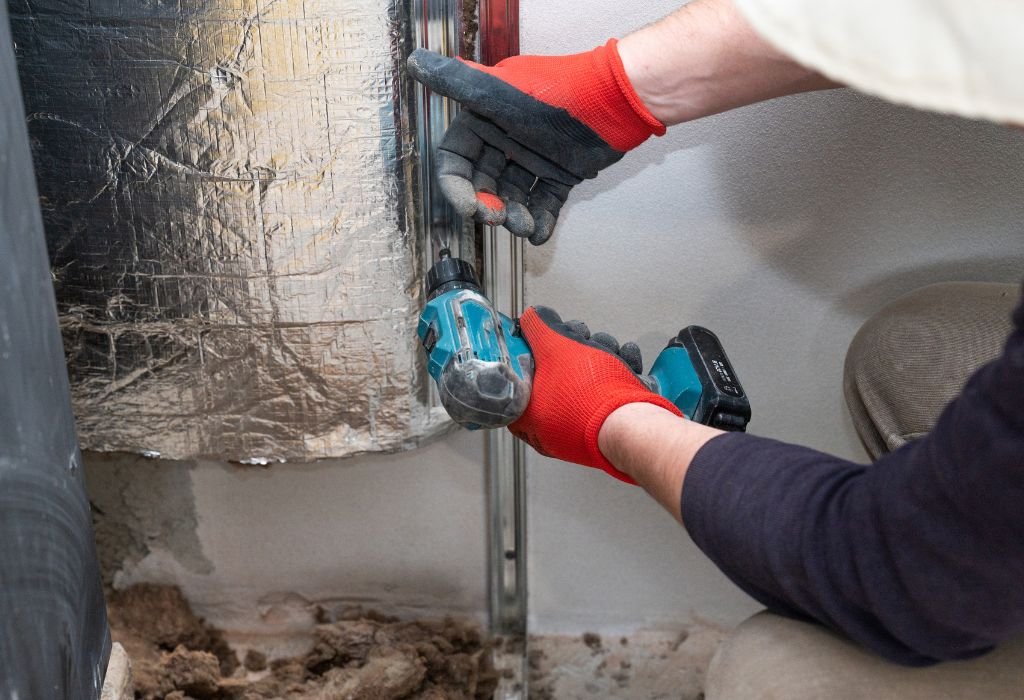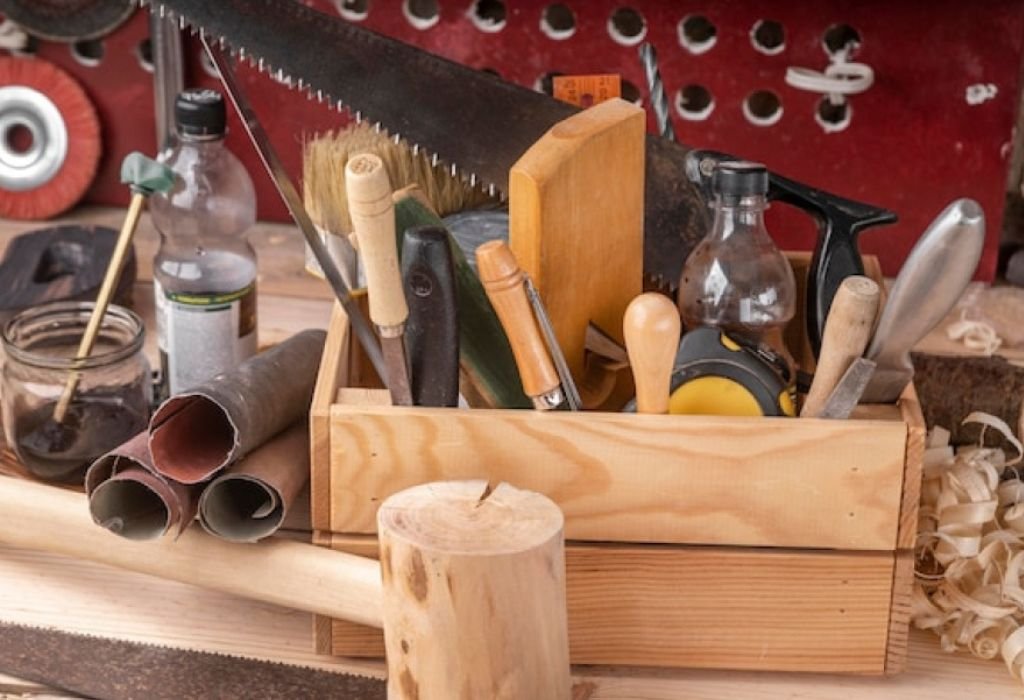Stripped screw heads, overdriven fasteners, and broken bits are common frustrations when using the wrong tool for the job.
Many DIYers and professionals quickly realize that torque control is just as important as power when choosing an impact driver.
The curiosity often begins when someone sees two tools of similar size drive screws at dramatically different speeds.
One driver barely sinks a lag screw, while another with higher torque pushes it effortlessly into dense lumber. This leads to the essential question: how much torque do I need in an impact driver to handle different tasks?
Torque ratings for modern 18V and 20V Max impact drivers typically range between 1,500 and 2,000 inch-pounds, which equals about 125 to 167 foot-pounds. For comparison, compact 12V models usually provide 800–1,200 inch-pounds, suitable for lighter assembly and cabinetry (source).
Higher torque is not always better, though, as excessive force can damage fasteners and split wood.
The benefit of understanding torque needs is simple: it helps avoid tool overkill, wasted money, and frustrating mistakes.
Statistics show that improper fastening is one of the leading causes of structural screw failure, which can compromise safety in decking and framing projects (source).
By matching torque levels to specific jobs, users can achieve faster, cleaner, and safer results.
This guide explains how much torque you need in an impact driver for tasks like cabinetry, decking, lag screws, and more.
It also breaks down torque specs, job-matching, and the difference between an impact driver and an impact wrench, so you can choose confidently.
The Quick Answer: Torque Ranges by Job

The amount of torque you need in an impact driver depends on the task. Light assembly and cabinetry require far less torque than deck building or driving lag screws.
For simple jobs like installing hinges, assembling furniture, or working on electronics, an impact driver with 800–1,200 in-lbs is sufficient. Deck screws, framing, and general construction usually need 1,500–1,800 in-lbs for efficient fastening.
When driving larger lag screws or structural fasteners, aim for 1,800–2,000 in-lbs to ensure enough power without stalling. Anything beyond that, such as removing automotive lug nuts, is better handled by an impact wrench, not a driver.
Can light assembly be done with sub-1,200 in-lbs?
Yes, cabinets, small screws, and light-duty tasks work well with 800–1,200 in-lbs.
What torque is best for deck building?
About 1,500–1,800 in-lbs paired with high impacts per minute (IPM).
Are lag screws possible with a driver?
Yes, with 1,800–2,000 in-lbs, an impact-rated bit, and proper pilot holes.
Can an impact driver remove lug nuts?
No, lug nuts typically require 80–140 ft-lbs, which is beyond most drivers.
Is more torque always better?
Not always—excess torque can strip screws, break bits, or damage materials.
Understanding Specs: In-lbs, Ft-lbs, IPM, and RPM
Torque values for impact drivers are usually measured in inch-pounds. One foot-pound equals 12 inch-pounds, so 1,800 in-lbs equals 150 ft-lbs.
Impact drivers also list RPM (rotations per minute) and IPM (impacts per minute). These values determine how quickly and efficiently screws are driven.
What’s the torque range of modern impact drivers?
Most 18V/20V models range from 1,500–2,000 in-lbs.
Why convert in-lbs to ft-lbs?
It helps compare impact drivers with impact wrenches.
What role does RPM play?
Higher RPM drives screws faster.
What about IPM?
More impacts per minute improve efficiency in tough materials.
Do specs guarantee performance?
Not always—bit quality and user technique also matter.
Impact Driver vs Impact Wrench: Know the Difference
Impact drivers use a 1/4-inch hex chuck and are designed for screws and small fasteners. Impact wrenches use a 3/8-inch or 1/2-inch square drive and handle bolts, lugs, and heavy-duty tasks.
Drivers excel in woodworking, decking, and cabinetry, while wrenches dominate in automotive and industrial applications.
Can an impact driver replace an impact wrench?
No, drivers lack the torque required for bolts and lug nuts.
Is an impact wrench too powerful for screws?
Yes, it can snap or strip small fasteners.
Can adapters make a driver into a wrench?
Adapters exist but are not recommended for high-torque tasks.
When should you buy both tools?
If you need woodworking and automotive capability.
Which tool is more versatile?
Impact drivers handle a broader range of everyday tasks.
Torque for Different Jobs and Materials

Cabinets, Furniture, and Finish Work
Cabinetry and fine woodworking need less torque to avoid splitting. Precision or low-speed modes are ideal for this type of work.
What torque range is ideal?
300–1,000 in-lbs is enough for light assembly.
Which bits should be used?
Impact-rated Phillips or Torx bits prevent cam-out.
Do hardwoods require pre-drilling?
Yes, it prevents cracks and splits.
Why not use full torque?
Too much torque damages screws and material.
Is a clutch useful?
Yes, a drill with a clutch is better for delicate work.
Framing, Decking, and Exterior Screws
For construction projects, torque needs increase. Driving long deck screws into treated lumber requires more power and impacts per minute.
What torque range works best?
1,500–1,800 in-lbs is recommended.
Should you pre-drill deck boards?
Yes, especially in hardwood decking.
Which bits are best?
Torx T25/T30 impact bits reduce slipping.
Do all deck screws need pilots?
Not always—some structural screws are self-drilling.
How to avoid overdriving?
Use stop collars or set screws flush with the surface.
Structural Screws and Lag Screws
Larger fasteners require maximum torque. Impact drivers in the 1,800–2,000 in-lb range can handle many lags with the right pilot hole.
Can an impact driver drive lag screws?
Yes, if torque exceeds 1,800 in-lbs.
When should you step up to an impact wrench?
When lags exceed 3/8 inch or are used in dense lumber.
Do pilot holes help?
Yes, they reduce splitting and required torque.
What bits should be used?
Impact sockets or hex head drivers.
Why do some lags feel harder to drive?
Wood density and friction cause spikes in torque.
Real-World Torque Examples
Popular models highlight real torque ranges. The Milwaukee M18 Fuel delivers up to 2,000 in-lbs, while the DeWalt DCF887 offers 1,825 in-lbs.
Compact 12V drivers, like the Milwaukee M12, deliver around 1,200 in-lbs for lighter work.
Is 1,200 in-lbs still useful?
Yes, for cabinetry and light projects.
Do 2,000 in-lb drivers feel twice as strong?
Not exactly—RPM and IPM also affect performance.
Are manufacturer specs reliable?
They’re useful but not perfectly standardized.
Why do numbers vary?
Battery size and electronics influence results.
Do 12V drivers work for decking?
They can, but 18V/20V models are faster.
Modes, Controls, and Bit Life
Modern impact drivers include multiple speed modes. Precision modes prevent overdriving, while high-torque modes handle tough jobs.
Using the right mode extends bit life and prevents stripped screws.
When to use precision mode?
For delicate assembly and starting screws.
Why do bits break?
Excess torque or using non-impact-rated bits.
Are impact sockets required?
Yes, for lag screws and hex head fasteners.
How often should bits be replaced?
When tips round or coatings wear down.
Does pulsing the trigger help?
Yes, it improves control and prevents damage.
Batteries, Runtime, and Environmental Factors
Battery size affects torque output and runtime. Larger 5Ah packs hold voltage better than compact 2Ah packs.
Cold weather reduces battery efficiency, lowering available torque.
Do larger batteries feel stronger?
Yes, they reduce voltage drop under load.
Does cold affect performance?
Yes, keep batteries warm for best results.
Are compact packs useful?
Yes, for overhead or light-duty work.
Does brushless technology help?
Yes, it maintains torque more efficiently.
Should batteries be rotated?
Yes, to prevent overheating or power loss.
Torque vs Clamping Force Reality
Torque does not always equal holding strength. Friction, lubrication, and wood density affect results.
Charts provide general guidance, but fastener manufacturers give the most accurate recommendations.
Can torque guarantee clamp force?
No, many variables interfere.
Where to find exact values?
Check structural screw datasheets.
Does lubrication affect torque?
Yes, it reduces resistance and changes results.
Are pilot holes necessary?
Yes, when required by the manufacturer.
Should depth or sound guide driving?
Depth and flush seating are more reliable.
When an Impact Wrench is Needed

Impact drivers cannot handle everything. Tasks like removing lug nuts or tightening suspension bolts require an impact wrench.
Impact wrenches provide far higher torque, often exceeding 200 ft-lbs.
When do you need an impact wrench?
For bolts, lugs, and heavy-duty fasteners.
Is a compact wrench strong enough for wheels?
Yes, most compact wrenches handle 100–150 ft-lbs.
Are adapters safe?
Only for light work, not high torque.
Do you still need a torque wrench?
Yes, for final tightening accuracy.
Can drivers remove rusted bolts?
No, they lack the necessary torque.
Buyer’s Guide: Choosing the Right Torque Range
Different users need different torque levels. Matching specs to jobs ensures efficiency and prevents damage.
DIYers, builders, and professionals benefit from different torque classes.
What torque suits DIY homeowners?
1,200–1,600 in-lbs is sufficient.
What about remodelers or deck builders?
1,700–2,000 in-lbs is ideal.
Do finish carpenters need full torque?
No, precision modes and lower torque are better.
Which torque suits HVAC or service techs?
Mid-range drivers plus a compact impact wrench.
What about automotive hobbyists?
A driver plus a dedicated impact wrench is recommended.
Conclusion
So, how much torque do you need in an impact driver? The answer depends on the task—light assembly requires as little as 800 in-lbs, while decking and structural screws need 1,500–2,000 in-lbs.
For automotive bolts and lugs, step up to an impact wrench. By matching torque to the job, you’ll avoid frustration, extend tool life, and achieve professional results every time.

I’m John F. Nicholas, the founder, lead writer, and drill enthusiast behind 101drill.com. With years of hands-on experience in power tools and DIY projects, I created this platform to share practical knowledge, expert tips, and real-world insights to help others master the art of drilling.
